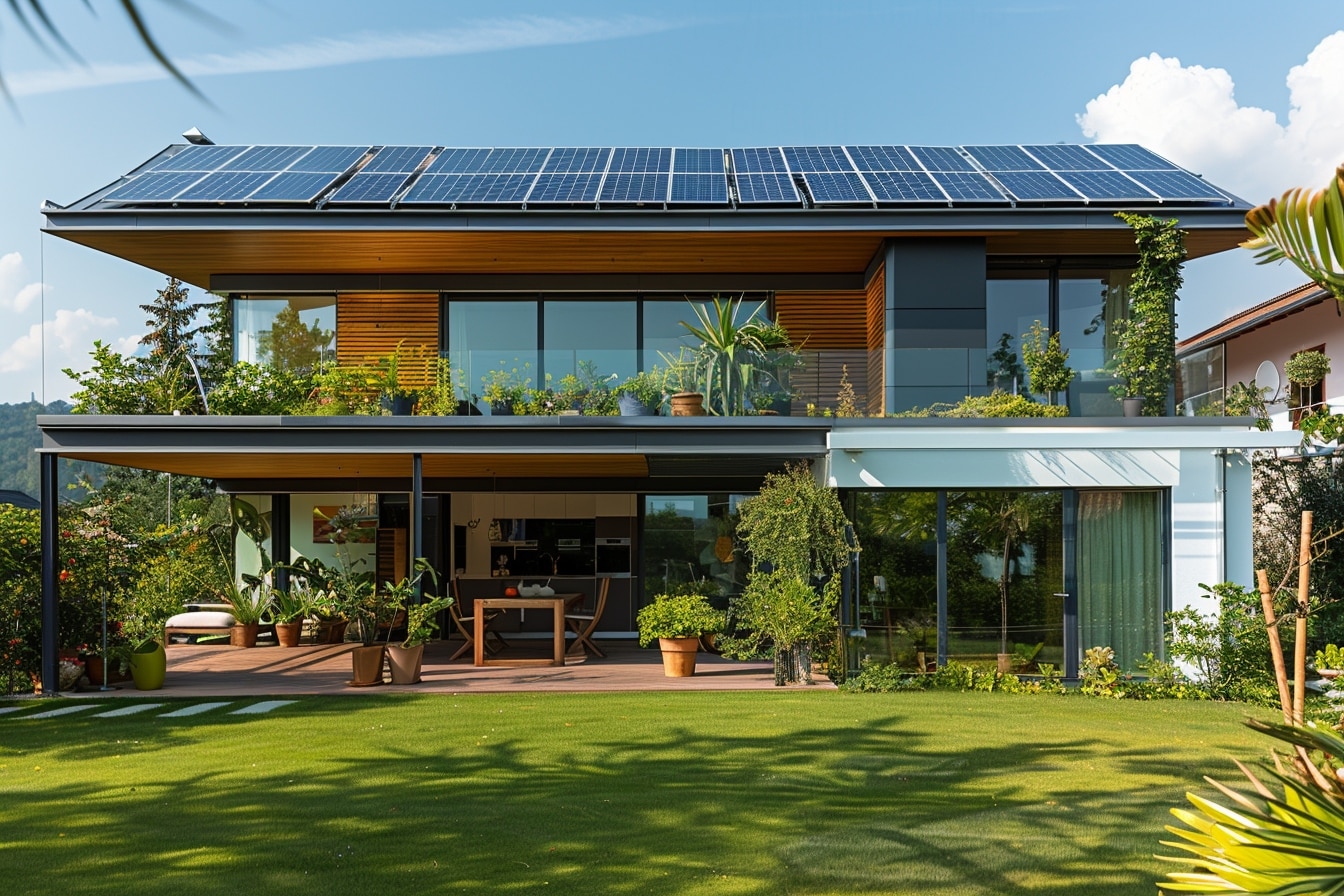Eco-friendly homes and sustainable living have been the focus of much interest in recent years. With issues of climate change and environmental degradation at the top of the agenda globally, the world is constantly looking for ways to reduce its carbon footprint. Sustainable living and green housing projects provide practical means for a healthy planet and a more energy-efficient lifestyle. What are eco-friendly homes, then, and what do they mean for sustainability?
What Are Eco-Friendly Homes?
Eco-friendly homes are homes designed and constructed to reduce negative impacts on the environment while using maximum energy. These homes employ sustainable materials, energy-efficient appliances, and renewable energy sources in order to decrease carbon emissions and waste production. Features such as solar panels, rainwater harvesting systems, and green roofs enhance a more sustainable lifestyle.
Key Features of Eco-Friendly Homes
- Energy Efficiency – Use of LED lighting, smart thermostats, and high-efficiency insulation to reduce energy consumption.
- Renewable Energy Sources – Installation of solar panels, wind turbines, or geothermal heating systems to generate clean energy.
- Sustainable Building Materials – Utilization of recycled, reclaimed, or locally sourced materials to minimize environmental impact.
- Water Conservation Systems – Rainwater harvesting, greywater recycling, and low-flow fixtures to reduce water wastage.
- Eco-Friendly Landscaping – Use of native plants, green roofs, and vertical gardens to improve air quality and support biodiversity.
- Smart Home Technology – Integration of automated systems to monitor and optimize energy and water usage.
Benefits of Sustainable Living
- Environmental Benefits – Reduced carbon footprint, less pollution, and conservation of natural resources.
- Economic Savings – Lower energy and water bills due to increased efficiency and renewable energy use.
- Improved Health and Well-being – Better indoor air quality, reduced exposure to toxic materials, and more natural lighting.
- Increased Property Value – Green-certified homes tend to have higher resale values due to growing demand for sustainable living.
- Energy Independence – Reliance on renewable energy sources reduces dependence on fossil fuels and energy grids.
Challenges of Adopting Eco-Friendly Homes
Despite their many benefits, eco-friendly homes come with certain challenges, such as:
- Higher Initial Costs – Sustainable materials and renewable energy installations can be expensive upfront.
- Limited Awareness and Accessibility – Many people are still unfamiliar with green housing practices and technologies.
- Maintenance and Technological Adaptation – Some eco-friendly systems require ongoing maintenance and adaptation to evolving technology.
The Future of Sustainable Living
The world is gradually moving towards sustainability, and governments and organizations are offering incentives in the form of tax credits, grants, and subsidies to encourage eco-friendly housing developments. Smart cities, net-zero homes, and sustainable communities are emerging as viable solutions to global environmental challenges. With advancements in green technology, the future of housing is set to be more energy-efficient, cost-effective, and environmentally friendly.
The dawn of eco-friendly homes and sustainable living is in no way a fad; it is the world’s shift to a more responsible and environmentally conscious way of life. Sustainable practices adopted in construction, energy consumption, and everyday living will contribute to a healthy earth while reaping economic and lifestyle benefits. This is in the real sense a normalcy that awaits in the near future, paved with the coming of an era of green.


